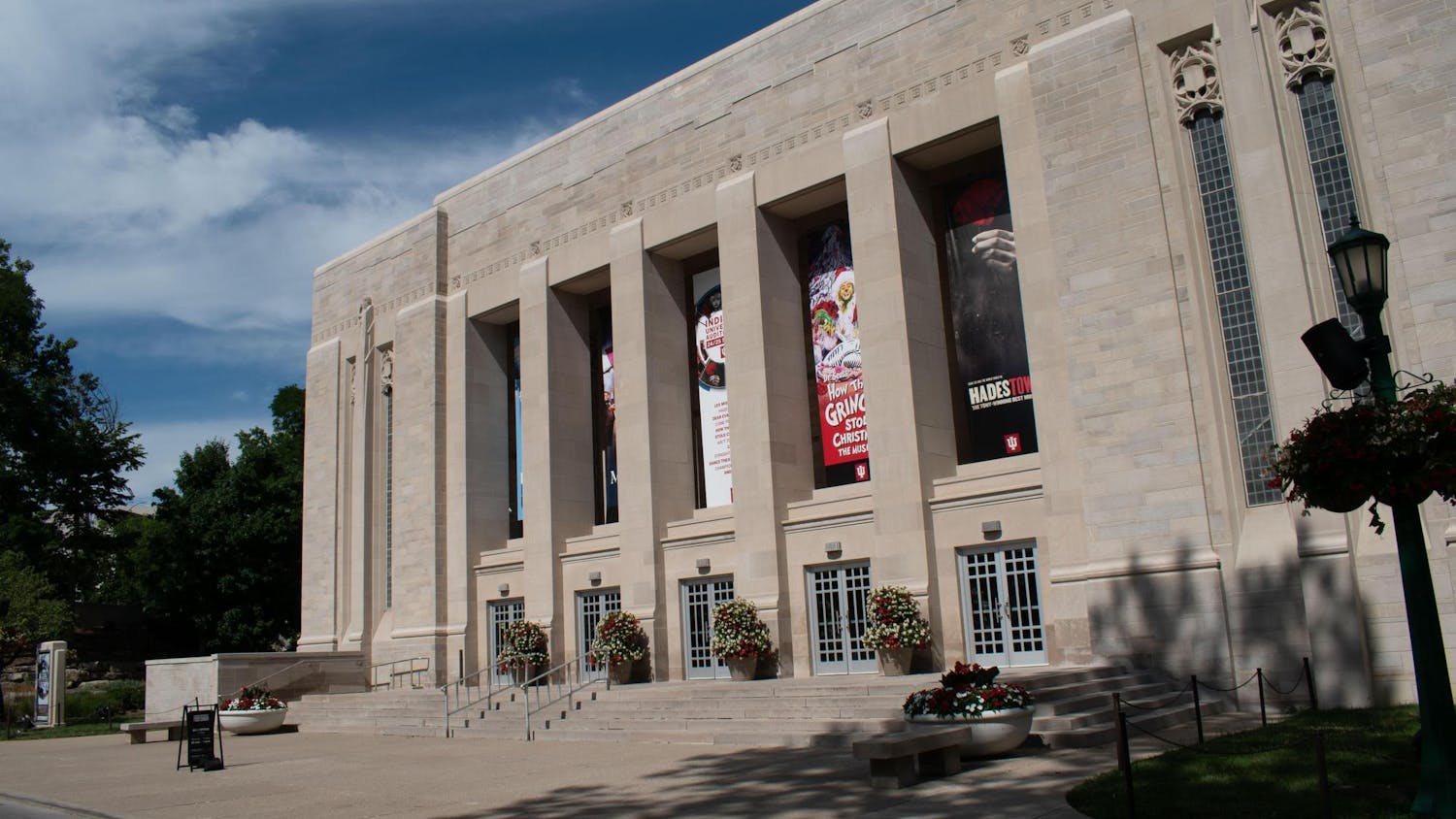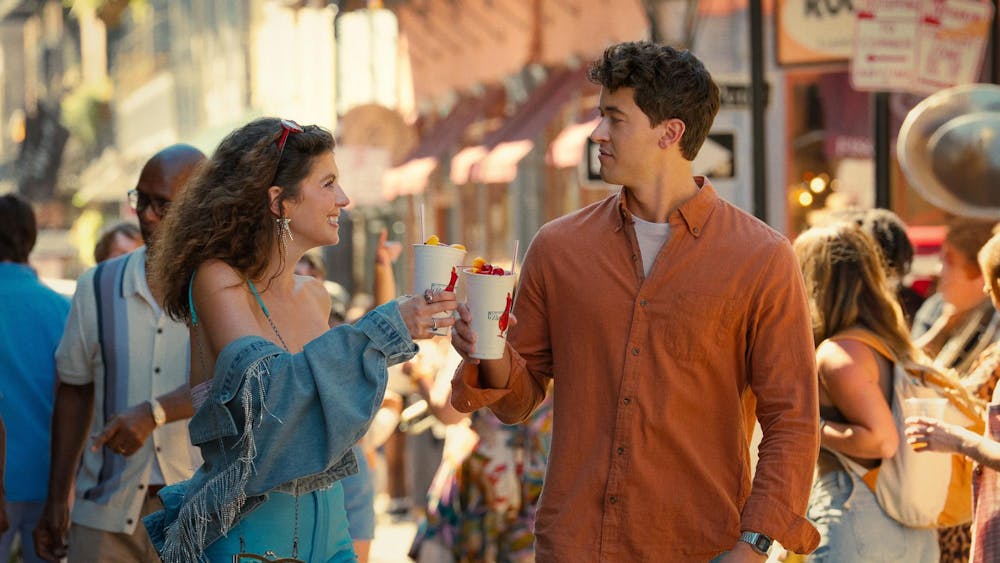Live organisms will be manipulated by the click of a mouse, printers will produce hand-drawn 3-D images and violinists will be accompanied by a computer-generated orchestra. The theme for the 23rd annual ArtsWeek, a collaboration of the IU Office of the Provost and various community and campus arts organizations, is “Technology and the Arts.” With more than 50 events during the 11-day schedule, which officially began Wednesday and concludes March 3, ArtsWeek leaves little to be desired.\n“We were overwhelmed by the caliber of proposals that were submitted this year,” said ArtsWeek coordinator Sheryl Knighton-Schwandt.\nArtists from the community and IU campus were invited starting last June to propose projects that paralleled with the theme, and 14 different events were funded by Interim Provost Michael McRobbie and Office of the Vice Provost for Research, the primary sponsor of ArtsWeek.\nKnighton-Schwandt said ArtsWeek is unique because it’s “something fresh every year” and it’s the premiere annual arts event that brings the campus and the community together.\n“For this theme, we’re not only showcasing what beautiful creations can be developed through new means of technology, but how we can use these tools to benefit everyone.”\nFor the complete schedule of ArtsWeek 2007, visit www.artsweek.indiana.edu.
Sound Garden\nSound Garden, a musical installation implanted in the Radio/TV Center, will invite visitors to listen to and “tend” the garden of music, which includes interactive, telematic systems, quadraphonic amplification and environmental sensors, according to its Web site.\n“It’s a musical composition, but it’s set up as an installation because it uses several things to realize the music that makes the garden,” said telecommunications professor and project coordinator Norbert Herber. Environmental sensors implanted in the Radio/TV building track variations in light, temperature and vibration in the room. The sound of the music changes as these factors fluctuate.\nPeople are invited to contribute to the garden by planting a file of their own online at www.x-tet.com/soundgarden.\nRadio/TV Center hours are 6 a.m. to 11 p.m., and the music plays continuously.
Informatics Philharmonic\nChristopher Raphael, associate professor at the School of Informatics and adjunct in music, statistics and cognitive science, wrote a computer program that serves as an orchestra.\n“It adheres to the player playing the part and generates an orchestra in a way that follows them,” he said.\nIn collaboration with Jacobs School of Music professor Mimi Zweig and student violinists Yoo-jin Cho and Thomas Rodgers, the computer-driven musical event will be accompanied by a talk from Raphael on how this type of program can contribute to performing musicians.\nNot a lot of musicians will ever get the opportunity to perform as a soloist, Raphael said. \n“What my program does is constructs the orchestra part in a way that fits in with what the soloist is doing,” he said. “This gives (performers) the chance to feel what that would be like.”\nThe “Informatics Philharmonic” is at 3 p.m. Saturday in Sweeney Hall in the Simon Music Library and Recital Center. The event is free and open to the public.
Takes Two to Tango\nStudents don’t have to leave campus to experience ArtsWeek. Twelve artworks that integrate the Chinese Yin-Yang symbol have been installed on light poles along Kirkwood Avenue and outside the School of Fine Arts, Musical Arts Center, Jacobs School of Music, Neal-Marshall Black Culture Center and IU Auditorium on campus. \nCommunity artist Joe LaMantia spearheaded the project that involved contributions from 11 other local minds. He said the Yin-Yang symbols are ideal for the theme of art and technology, explaining that the symbol – like both art and technology and the campus and the community – are often perceived as segmented.\n“As an artist, I see them as one,” he said.\nThe creation of the pieces, which LaMantia assures aren’t “just art for art’s sake,” took more than three months, largely because of the necessity that pieces withstand the outdoor elements.\nOne of the pieces, created by a researcher at the Kinsey Institute, features images of breasts, Barbie and Ken dolls and sex toys. LaMantia said the piece comments on sex education and technology, as what appears to be a text message appears on the other side of the piece.\n“There’s a lot of messages being given and information for students and people walking by (the pieces) to think about,” he said.\nThe works in “Takes Two to Tango” will be on display until March 3.
Human Nature\nAttendees of the “Human Nature II: Future Worlds” exhibition at the School of Fine Arts gallery will have the opportunity to attach a dog head to an insect torso and bird legs – all in the name of art. \nStill, the art in this exhibition, which is open from noon to 4 p.m. Tuesday to Saturday until March 9, comes with a message. “Mutations,” the piece described above by Eva Sutton, an artist and programmer from New York, is meant to urge consideration of the “potentially monstrous possibilities of hybridization,” according to the informational plaque near the piece.\n“Artists are making work that brings up cultural issues that question (research being done in the life sciences),” said SoFA gallery director Betsy Stirratt. “Knowledge is good, but how that knowledge is used is the question.”\nThe pieces in the show, which include sculptures and photography among other nontraditional mediums, are all from bio-artists. They investigate genetics, biotechnology, scientific imagery and genomics, according to the SoFA Web site.





